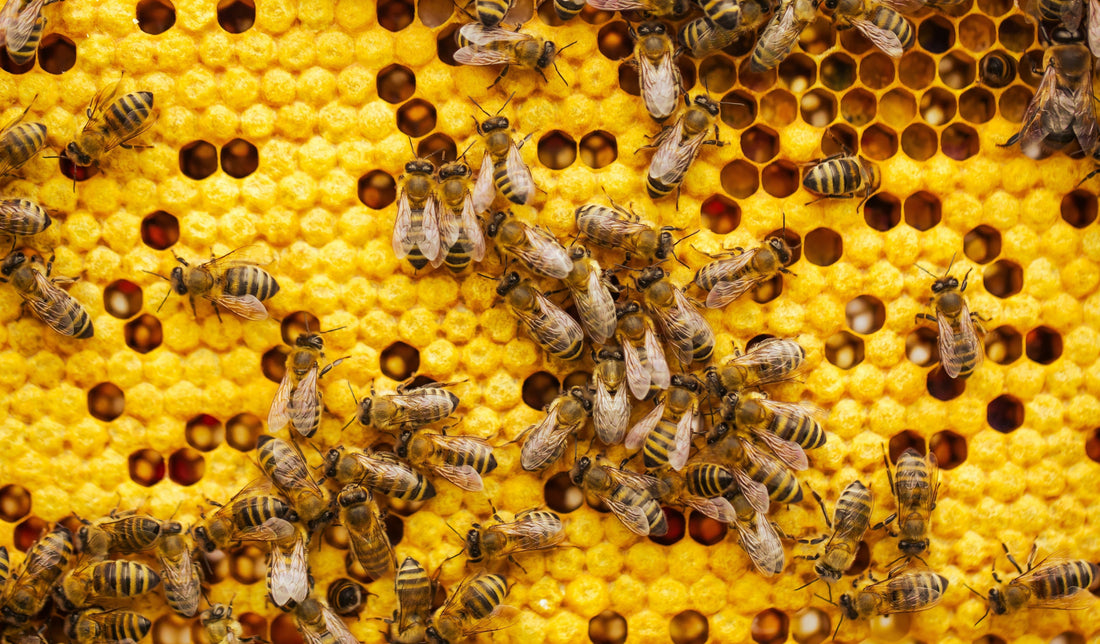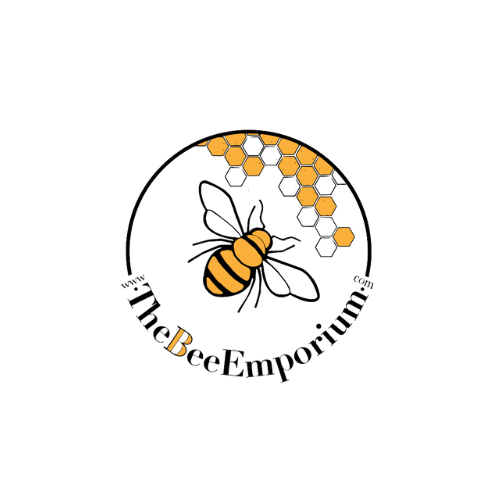
Fun Bee Facts
Share
Pollinators are responsible for 1 in every 3 bites of food we eat
We can thank pollinators for things like coffee, apples, almonds, and even chocolate. Pollinators, most often honeybees, provide pollination to over 1,200 crops. Certain crops are 90% dependent on bees for pollination, including apples, broccoli, cherries, and blueberries.
But what is a pollinator, you ask?
Pollinators are insects or animals that help plants reproduce by transferring pollen from one flower to another. They do so by collecting pollen on their bodies while drinking nectar from the flowers. As they move between flowers, little grains of pollen get left behind each time. And voila...The end result is pollination. But bees aren’t the only pollinators. Other important pollinators include:
- Butterflies
- Hummingbirds
- Wasps
- Moths
- Beetles
- Flies
- Bats
Bees hibernate or go dormant during the winter
Did you know that bees are cold-blooded creatures?
For this reason, a bee’s peak seasons are spring and summer, when the weather is warm and plenty of flowers bloom.
During the winter, when there aren’t many flowers blooming, bees enter a state of dormancy or hibernation.
Honeybees can survive the winter by clustering together in their hives. They form a big “huddle” and vibrate their wings to generate heat.
Other types of bees, like queen bumblebees, hibernate until spring arrives. They don’t eat nor drink, and their heart rate slows down during this time.
Bees have five eyes
Bees have five eyes, but they don’t see the way we do.
Two of their eyes are large compound eyes that sit on either side of their head. These eyes are made up of thousands of tiny lenses, which give bees a wide field of view.
Bees also have three small eyes in the center of their head, which are called ocelli.
Ocelli are used for stability, navigation, and orientation. Using their ocelli, bees can detect ultraviolet light, which allows them to find flowers more easily.
Like humans, bees sleep when they need rest
Let’s face it.
Bees are hardworking little creatures.
They regularly work 10+ hours daily with no weekends or vacation days off. But bees need sleep too. So after a long day of work, bees head back to their nests to get some shut-eye. Just like us, they need rest to function correctly.
And here’s the thing:
Bees are most active during the day but will also work at night if needed. This typically happens in social bee colonies like honeybee and bumblebee hives.
For example:
A single honeybee colony can have upwards of 50,000 bees in it. Some bees are responsible for collecting nectar and pollen from flowers, while others are responsible for cleaning the nest and making honey.
This means that bees have different schedules depending on their job duties.
Forager bees are active during the day because they work outside the hive, gathering food from flowers. House bees have more flexibility and can work at night because they don’t leave the hive to work. Instead, they stay inside the nest, cleaning and doing various duties.
Bees aren’t the only insect that produces honey
While bees are the most popular insect associated with honey, they’re not the only ones that produce it.
In fact, certain species of wasps and ants also produce honey.
However, the honey produced by these insects is not nearly as much as that produced by honeybees. A healthy honeybee colony can make over 100 pounds of honey per year.
As a result, the honey you purchase comes solely from honeybees because other insects don’t make enough honey for human consumption.
Female bees make up the majority of the beehive
Most social bee colonies are made up of more than 80% females.
How come, you ask?
Because female bees are responsible for the bulk of the heavy lifting for the hive. Female bees feed, clean, and protect their nests. They also decide when to replace the queen or swarm to a new nesting spot.
In contrast, most male bees have one job:
To mate.
As such, large numbers of male bees aren’t needed like they are for female bees.
That said, male bees are still crucial for bee survival. Mating is an important job that ensures the future generation of bees. Bees wouldn’t exist without the help of both male and female bees working together.
Honeybees can have over 50,000 bees in a single hive
Honeybees are some of the most social creatures on the planet.
A strong and healthy honeybee colony can have over 50,000 honeybees working together like a strong family unit.
Compare that to bumblebees.
A bumblebee colony will only have between 50-500 bumblebees in it.
However, social bee colonies all have a few things in common. For instance, social bee species have hives consisting of a queen bee, worker bees, and drone bees.
Queen bees are responsible for laying eggs, drones (males) are responsible for mating, and workers (females) are responsible for cleaning, feeding, and protecting the nest. In a nutshell, bee colonies are run like well-oiled machines, with every bee performing a particular task it was born to do.
A queen honeybee can lay over 2,000 eggs per day
As mentioned, honeybees have the largest colonies of any other type of bee species. During the warm months, there can be upwards of 50,000 honeybees per colony.
But here’s the thing:
Hundreds of worker honeybees die per day. A busy queen honeybee must replace such losses, so the colony population doesn’t dip too low.
Because of this, the queen honeybee is too busy laying eggs to do much else. That’s why worker bees handle her every need, including feeding, cleaning, and protecting her.
More importantly?
If the queen honeybee’s health declines, she’ll soon be replaced with a new queen bee. Worker bees can sense when their queen is getting too old or sick, so they’ll begin raising a new queen to take her place.
Queen bees are the longest living member of the colony, with an average lifespan of 2-4 years.
There are more than 20,000 bee species
When people think of types of bees, honeybees and bumblebees are usually the first examples that come to mind.
But there are over 20,000 different species of bees, including mason bees, carpenter bees, leafcutter bees, and sweat bees.
And interestingly enough, not all bees live in social colonies with other bees. In fact, most bee species are actually solitary creatures.
Solitary bees live alone, and they don’t have the same complex social structure as social bee species. Instead, each bee is responsible for taking care of itself and its own offspring – without the help of other bees.
In contrast, social bees live in large colonies with hundreds, or even thousands, of other bees. Social bee colonies are made up of a queen, worker bees, and drone bees.
Only female bees can sting
Yup, you read that right.
Stingers are actually modified egg-laying organs, so only female bees have them.
Male bees, or drones, don’t have stingers because they don’t lay eggs. Their sole purpose is to mate with a female bee to ensure the future generation of bees.
So what does this mean?
It means that female bees are responsible for protecting themselves and their hive. Male bees cannot. That said, some species of male bees still try to pull their weight in defending their nests.
For example, male carpenter bees buzz around predators to deter them from their nests. The fact that male carpenter bees don’t have stingers doesn’t stop them from putting on a good show to scare intruders away.
Ancient Egyptians used honey as food and medicine
Bees have been around for a long time – even the ancient Egyptians used honey as both food and medicine.
This is because honey is naturally antibacterial, antiviral, and antifungal. It also contains antioxidants, which can help reduce inflammation. Because of these properties, honey has been used to treat various ailments for centuries.
For example, honey has been used to treat sore throats, wounds, and digestive issues. It’s even been effective in treating more severe conditions like diabetes-related foot ulcers, psoriasis, and eczema.
